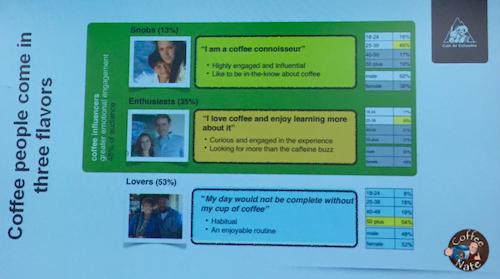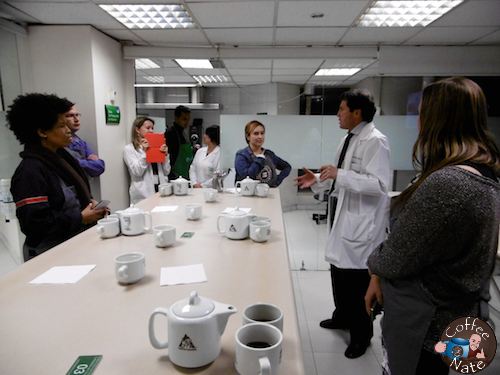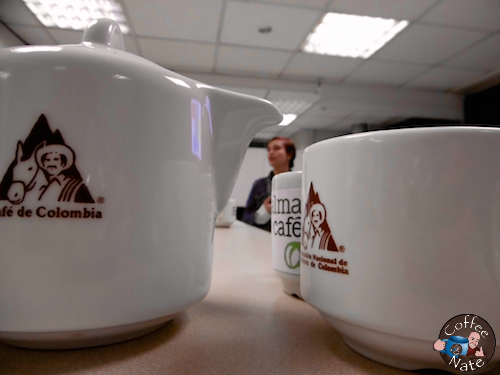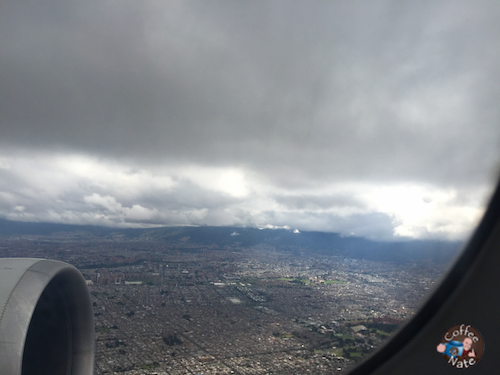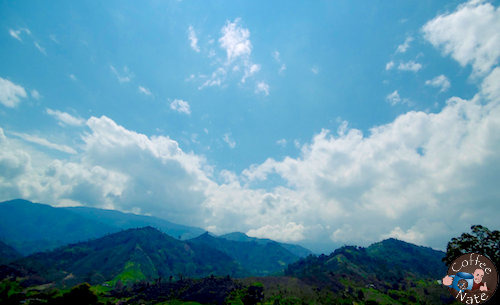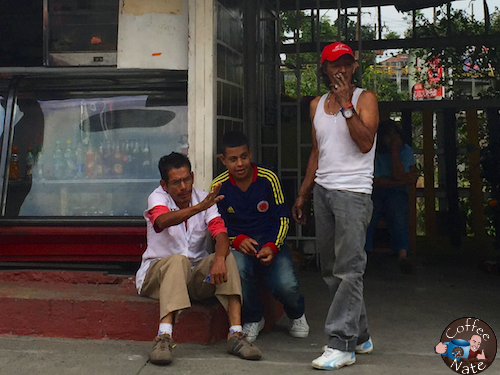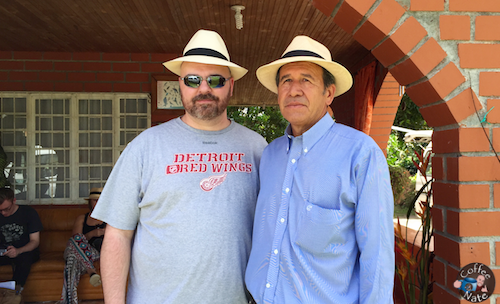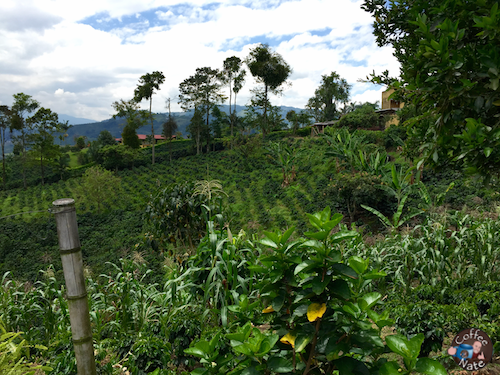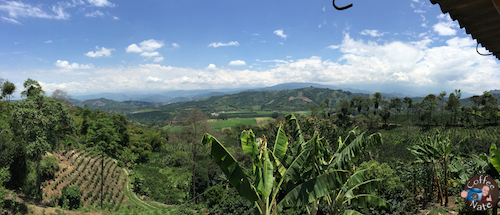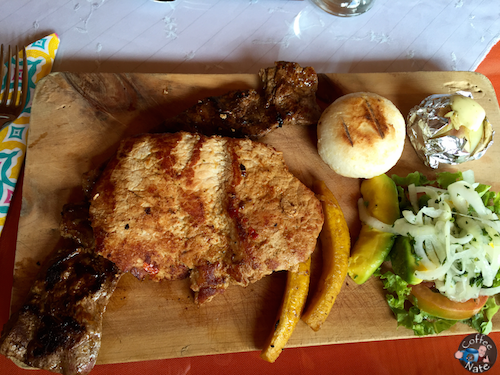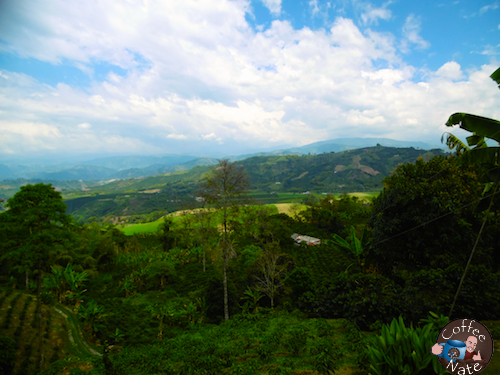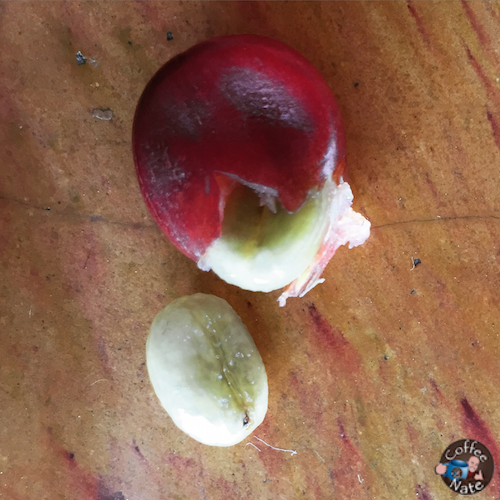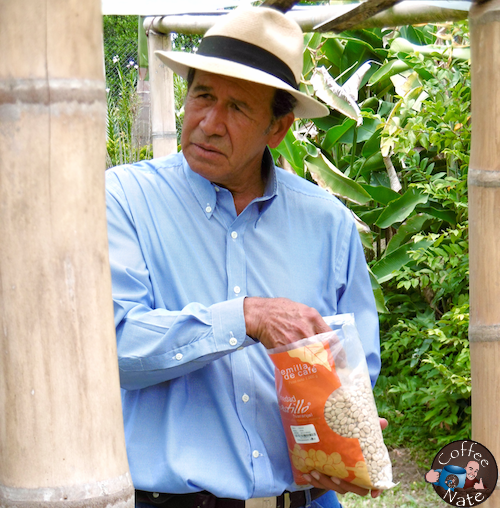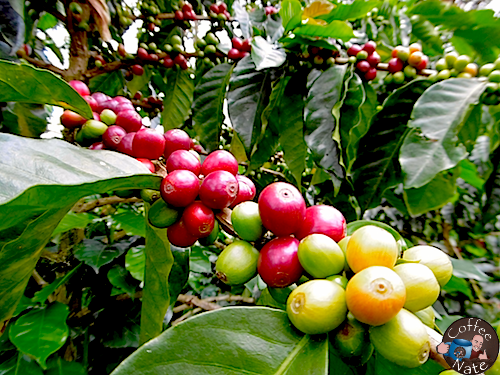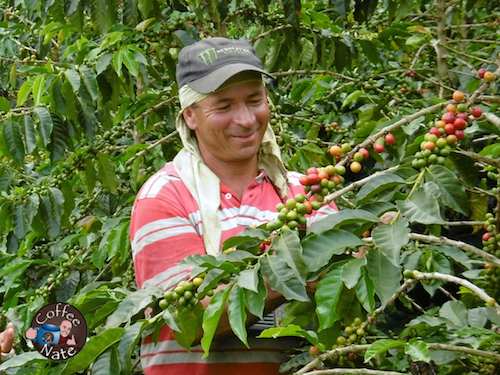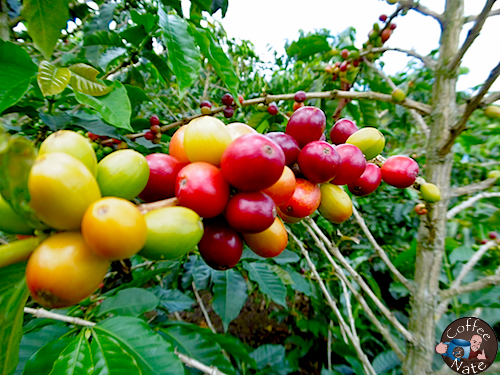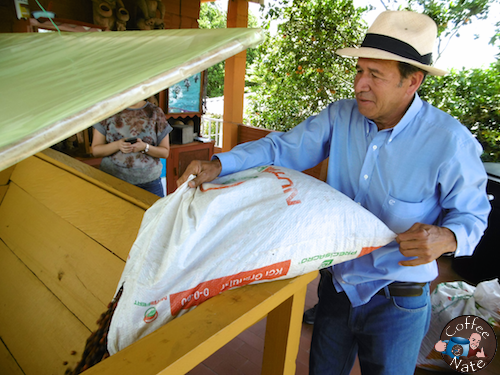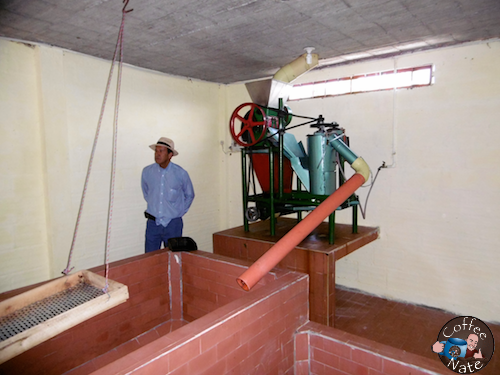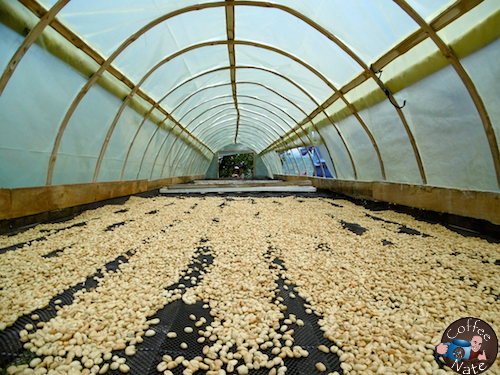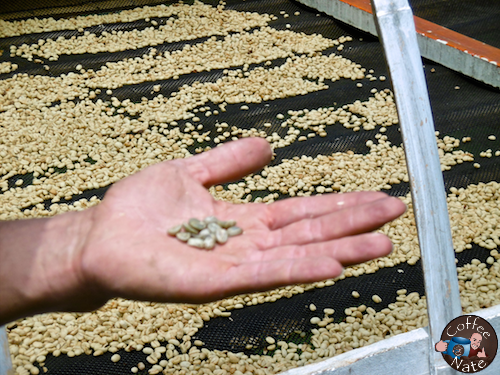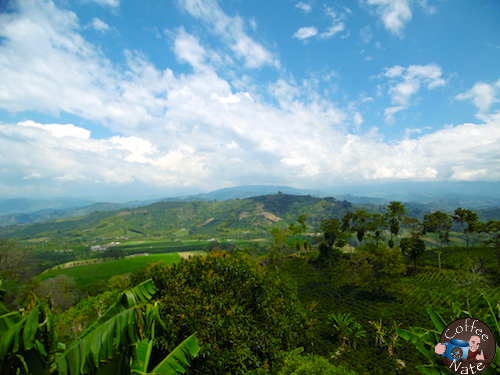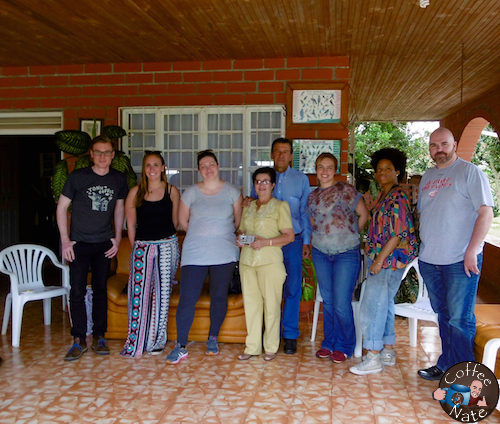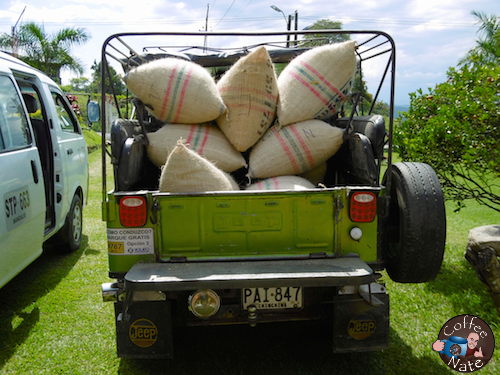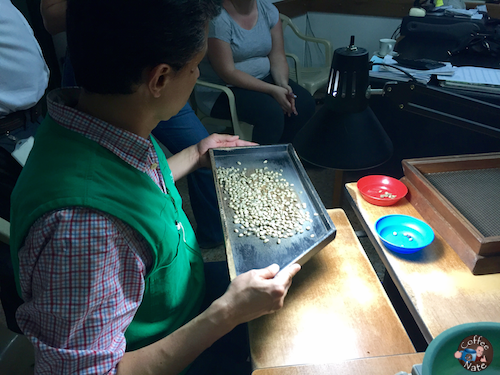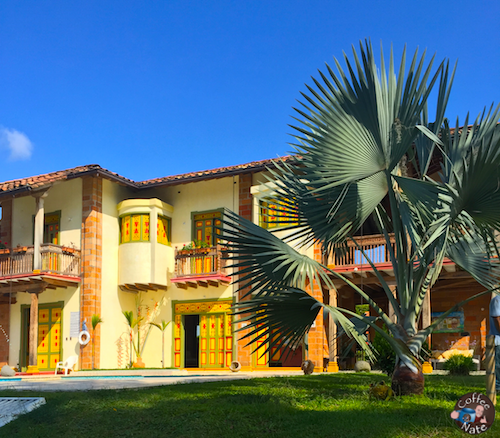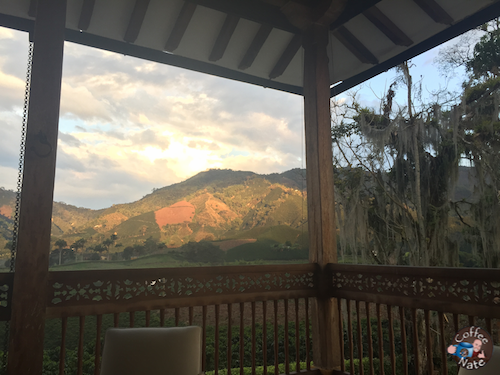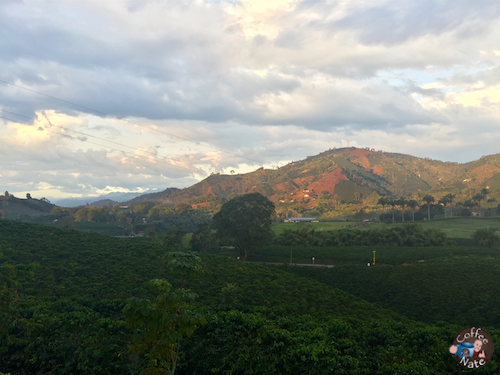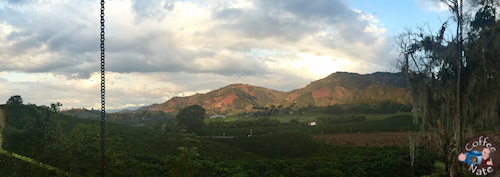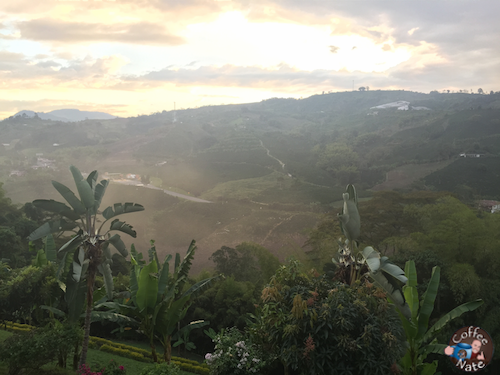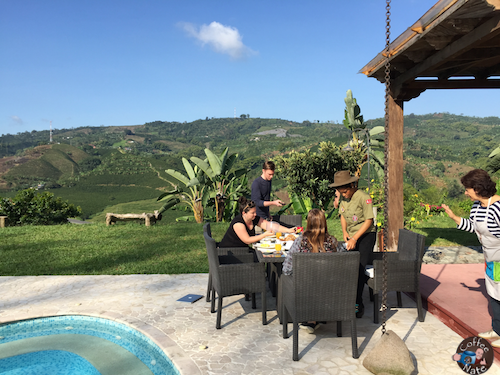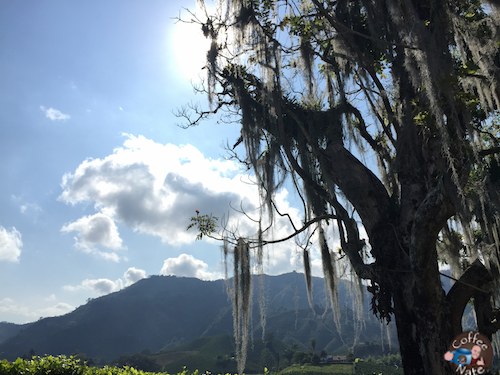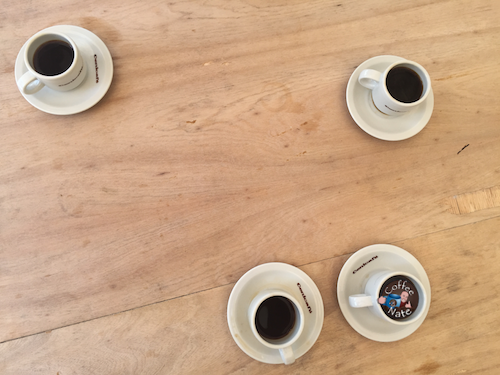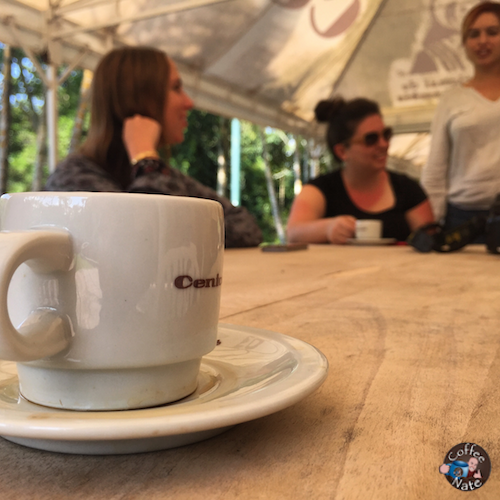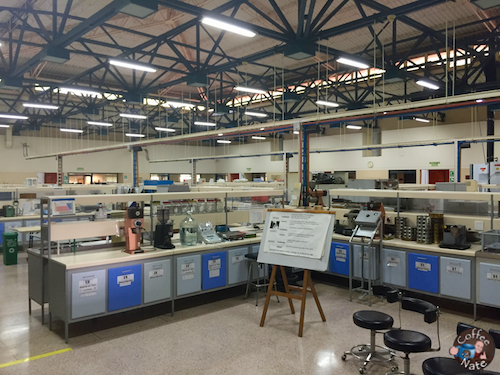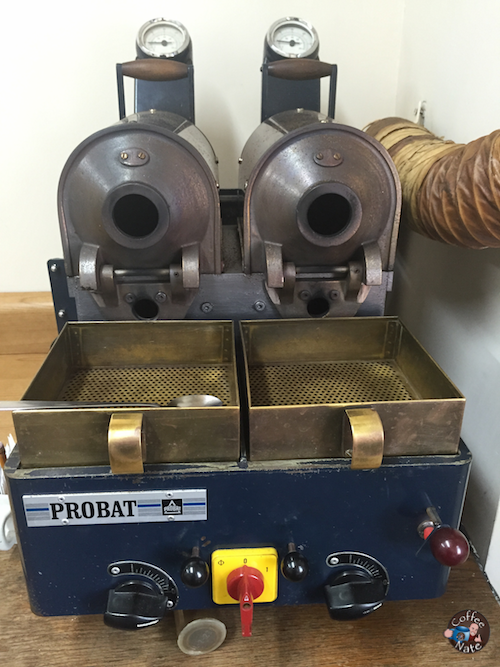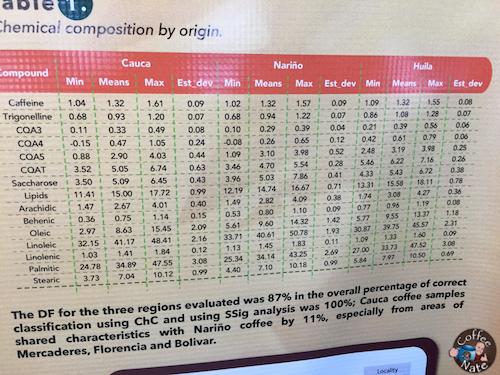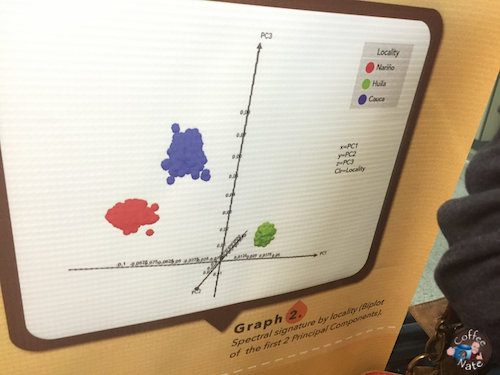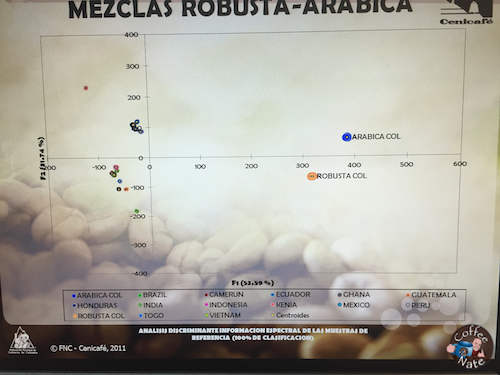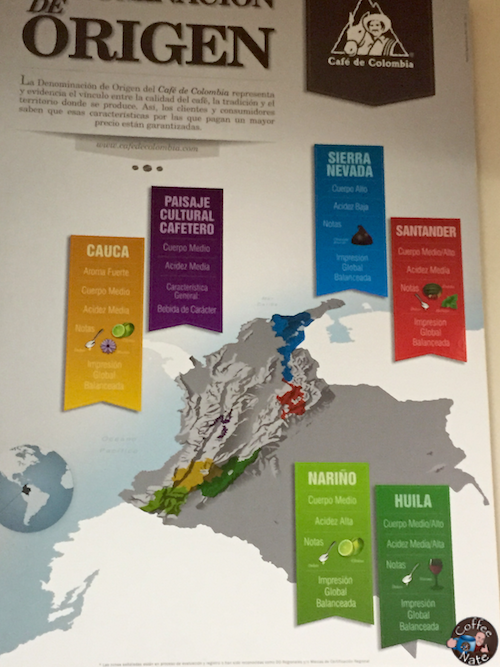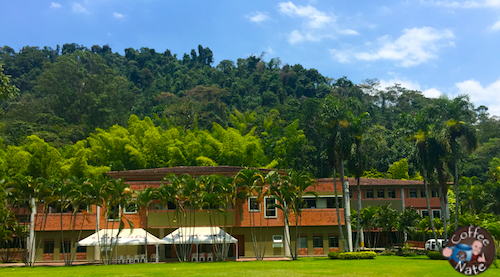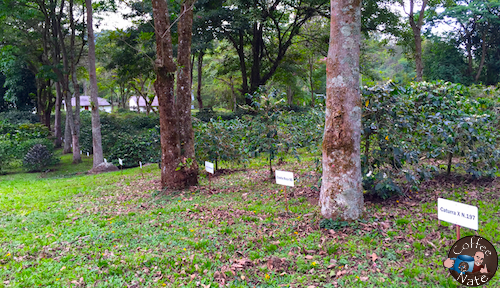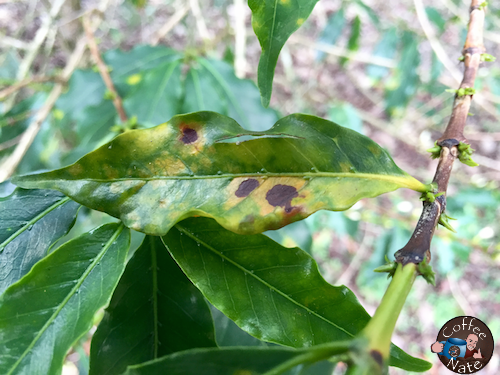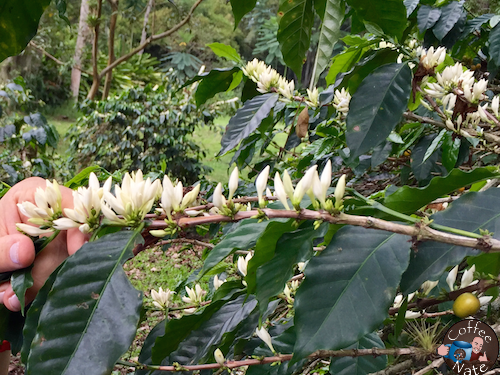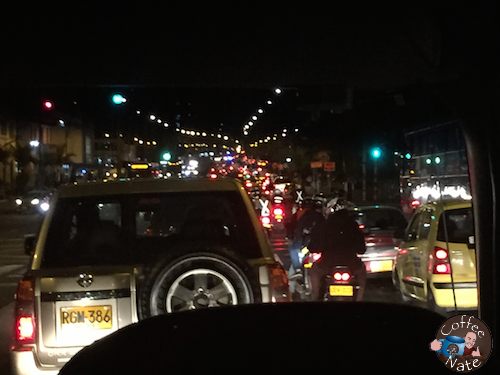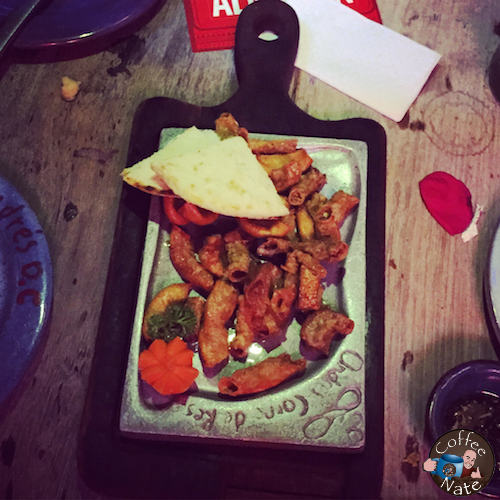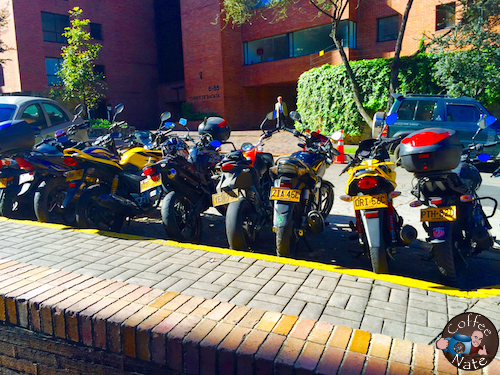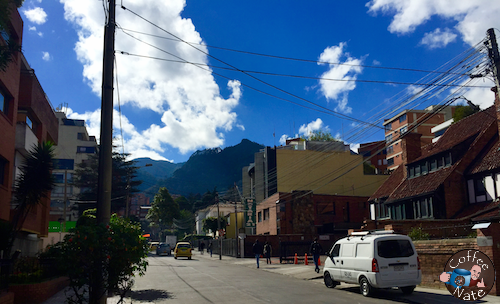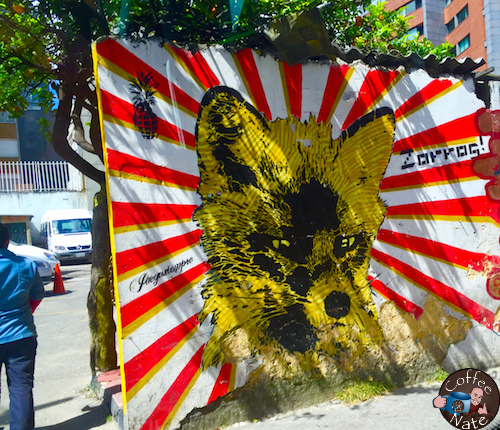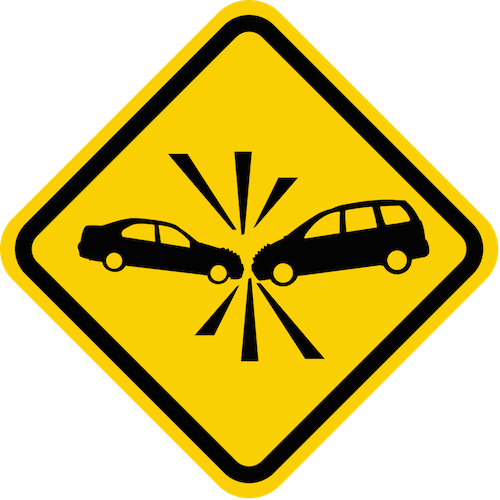Disclosure: I may receive compensation when readers purchase products after clicking links on this site. This does not affect my opinion or the price you pay, but does help support my work. Reviewed products may have been provided at no cost.
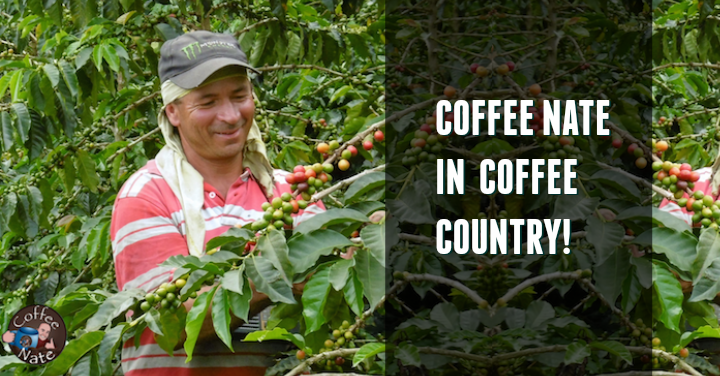
Colombian Origin Trip
When you think of Colombia, you think of coffee. I was recently invited by Café de Colombia, to visit the country and learn more about what they are doing, and to visit a coffee farm. I quickly jumped at the chance to meet the people behind Colombian coffee, farmers, co-op workers, and the folks at Cenicafé. My time in Colombia was only a few days, but the experience will last a lifetime. It was truly an inspiring and awesome adventure!
I will go into more depth in future posts, but this post will be a general collection of my pics and some initial thoughts. I was really struck by how advanced the coffee industry is in Colombia. The coffee industry in this country is in sharp contrast to less developed origin nations. There are many resources available to the farmers, who largely own the land they work.
American Consumers Are Changing The World!
Another thing that I found interesting is the impact that the western marketplace is having upon the country. As consumers have become more aware of the production of coffee from seed to cup, and not just the product on the shelves, it is having a significant impact upon this producing nation. There is more emphasis on quality, sustainability, and an increased focus on all-around ethics. I began this journey thinking it had the potential to become an exposé, what actually happened was quite the opposite. I listened and learned.
The Pictures!
Here are many of the images that I took during my visit to Colombia. I met some amazing people along the way and of course consumed some of the world’s finest coffees!
Click to see the pics!
- Younger generations are more concerned about the origins of the coffee they’re drinking. This is changing the way that Colombia is marketing their beans, as well as how they are producing them.
- After the four of us arrived, we visited Cafe De Colombia HQ, where we learned about how they protect the brand of Colombian coffee, and their plans/challenges for the future.
- We were treated to a cupping session, where we experienced coffees from 3 regions of Colombia. Often, coffee lovers think of “single origin” as being from a single country, which isn’t entirely true. Coffees from the same country can exhibit a wide variety of flavors. This is particularly true with larger countries that possess a variety of climates…such as Colombia.
- The next morning, we flew to Pereira, which was about an hour drive away from the coffee farm.
- The drive from the airport to the coffee farm, which was located in Vereda Alto de la Mina in the town of Chinchina, included sweeping vistas that made the ride feel much shorter.
- We drove through several villages on our way to the coffee farm. It was a treat to witness snapshots of Colombian life as we meandered through the mountains. Unfortunately, my phone was unable to capture many of the unique sites along the way.
- Coffee Nate and Coffee Farmer, Luis Alirio Rios
- The el descanso coffee farm was beautiful
- The view from this coffee farm was breathtaking!
- Lunch served at the coffee farm
- A gorgeous view from the coffee farm, el descanso. The farm also contains other crops mixed in with the coffee plants. This produces richer soil and offers shading for the plants.
- Coffee “beans” are the seeds of a fruit. Each fruit produces 2 “beans”.
- Colombian coffee farmers obtain their seeds from Cenicafe. They know exactly what seeds to provide for each region.
- Coffee cherries must be picked when they are ripe…usually when they are red in color. Because of this, they must be hand-picked to ensure only ripe fruits are selected.
- Luis hires pickers during times of harvest. The pickers are instructed to only select ripe beans. If their buckets have too many unripe beans, they will pay a penalty.
- Coffee cherries are edible, providing a tart to sweet flavor, depending on the ripeness. Green coffee cherries produce poor quality coffee beans.
- Once the cherries are picked, they must be processed. The majority of Colombian coffee is washed. This means that the beans are separated from the fruit mechanically, rather than allowing the fruit to dry or ferment while the bean is still inside. The resulting bean is referred to as “parchment coffee”, as there is still a skin on the bean.
- After filling the hopper, we go below to process the coffee. The machine separates the coffee from the fruit, and shoots it out of the tube. The resulting product is then put through a screen to further remove the residual fruit.
- The parchment coffee is dried in a single layer to prevent molding. The coffee is turned frequently to speed up the process.
- Parchment coffee
- I can’t get enough of this view. Can you tell? lol The house is situated on a bluff, offering panoramic views that are not adequately portrayed with photos.
- The entourage and our generous hosts at the coffee farm.
- We’re ready to transport the parchement coffee to the co-op for sale!
- Once the coffee arrives at the co-op, the bags are weighed, and a 100g sample is tested. This will let the farmer know how much his coffee is worth, depending on how many and what types of defects are found. The green coffee is graded based on size and defects. The higher the grade, the higher the price.
- After a long day at the coffee farm, we were treated to a stay at this hidden gem. This oasis was even difficult for our driver to find, as we drove by it twice. This was more of a hostel than a hotel, but we were the only group there on this night. The rooms were clean and spacious, and the food and drink was phenomenal, as was the view. The showers were open air and the showerhead was about 12 feet above, which made for an interesting bathing experience. I showered in the dark, as to not attract bugs. lol
- Views from Finca Milagrosa
- Views from Finca Milagrosa
- Views from Finca Milagrosa
- Views from Finca Milagrosa
- Breakfast is served at Finca Milagrosa
- On to Cenicafe, where we were treated to a cup of coffee and some serious technical knowledge about Colombia coffee. I was shocked at the depth and breadth of study and services offered to the coffee producers.
- Coffee break at Cenicafe.
- A portion of the lab at Cenicafe.
- A new sample roaster is on the way, but this vintage Probat is really cool!
- The coffee from each region of Colombia is “fingerprinted”. Not only can an expert cupper taste the differences, but these unique characteristics have been mapped out by their chemical composition. This aids Cafe de Colombia in protecting the brand of Colombian coffee. Occasionally, counterfeit coffees are found in the marketplace, claiming to be 100% Colombian coffee. The folks at Cenicafe are able to test the product from the store and verify the claim.
- Here, we see a graph of three Colombian varieties. Each color represents a region.
- This graph shows Arabica and Robusta coffee from Colombia, as well as others that have been tested from various regions. You can clearly see that the authentic Colombia coffees should fall on the right side of the graph.
- This graphic depicts Colombia’s 6 major coffee varieties, as well as their dominant flavor profiles.
- Cenicafe not only fingerprints and verifies that coffees claiming to be Colombian are being honest, they also provide vital research for the future of Colombian coffee, as well as support for the producers throughout the country.
- Cenicafe has their own coffee farm of sorts. They have several dozen varieties of coffees from all over the world. The purpose of this, is to determine which coffees are naturally resistant to the 2 major enemies of a healthy coffee product, coffee rust and the coffee berry borer.
- Coffee Rust affects coffee grown in several countries, and threatens mass shortages of coffee. This not only affects the price of the product, but also the livlihood of the coffee growers. The researchers at Cenicafe are cross-breeding various coffee plants in an effort to produce and excellent tasting coffee that is organically resistant to coffee rust and the coffee berry borer insect.
- Creating a new variety of coffee is a painstaking task, which takes dozens of years. The first step is to combine two plants. This is done by cross-pollinating two species of coffee plant. Since coffee is self pollinating, this must be done while the blossoms are closed. They open the blossoms from one plant and remove its pollen. Pollen from another species is introduced to the blossom and the branch is covered with a plastic bag to prevent contamination. The resulting fruit is the first iteration of the new species. Only a few berries will provide a split of each species. Most of these first fruits will be either one or the other species. The few that do possess each trait are planted and the process repeats multiple times. A couple of dozen years later you have a new variety. Amazing stuff!
- Traffic in Bogota is insane. Half of the vehicles on the road are small motorcycles. Unlike in North America, these bikes travel on the lane markers, weaving between lanes and giving me a heart attack at every turn. When you are waiting at a traffic signal, dozens of motorbikes move to the front of the line and stretch across the front. Every green light is like the start to a supercross race. Bogota is a city of about 8 million people, but the roads are engineered for about 1 million. Public transportation hasn’t been mastered either. I would never drive here!
- The culinary treats are varied and delicious…for the most part. The fried beef instestine was tasty, but hardly the reason I would return. lol
- A row of motorcycles in Bogota.
- Mountains are the backdrop to this visually stunning city. I was pleasantly surprised by the cleanliness and friendliness of such a large city. The people are generally welcoming and obviously proud of their city. My experience was a far cry from what I had expected, which is something along the lines of the 80’s version, which is a distant memory. Hey, there’s a Papa John’s…how bad can it be?
- Street art in Bogota
- Saw this road sign, but I still don’t know what it means. Crash imminent?
- How To Make Coffee With The AeroPress :: Inverted AeroPress Video Tutorial - February 2, 2022
- How To Clean a Chemex : #CoffeeTip - January 14, 2022
- Origin Trip to Colombia! #MindTheBean - June 3, 2021
